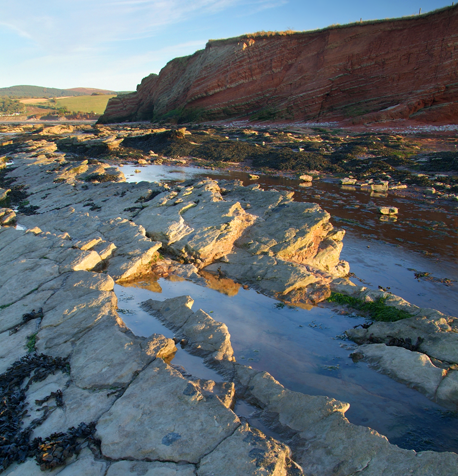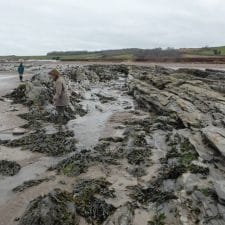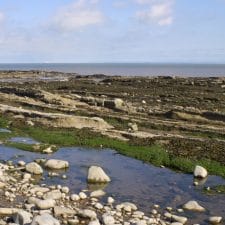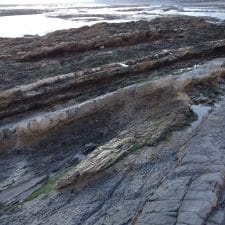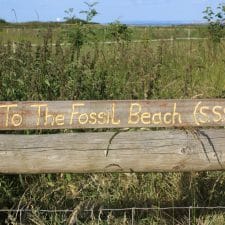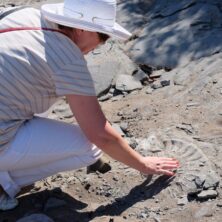Helwell Bay (Fossil Beach) is a great place to see the story of Watchet’s geology.
To access Helwell Bay from the Visitor Centre, follow the footpath from the railway crossing at Goviers Lane along behind the East Quay and up the steps. Take the coast path to Helwell Bay car park. From the car park cross the field and walk down the flight of concrete steps to the beach.
The concrete steps down to the beach marks a major fault line, called the Watchet Fault. The red and green striped rocks on your left are Mercia Mudstones, dating from the Triassic time when the landmass was part of an ancient desert near the hot equator, similar to the Sahara today; on your right are grey mudstones belonging to the Helwell Marls. These marls are the youngest Jurassic rocks exposed on the Somerset coast and date from around 200 million years ago, when sea levels rose and Watchet was submerged in shallow seas. Here you will find some of the earliest ammonite fossils recorded in Britain.
Did you know?
There’s oil in them there cliffs!
In 1916 it was discovered that some of the dark bands of shales were bituminous (containing high quantities of organic matter) and oil-rich. The Shalime Company was set up and the ‘Somerset oil rush’ began. However it did not receive sufficient financial backing to make the venture successful. One brick oil retort still stands at the northern end of the car park at Kilve Pill a couple of miles down the coast.
Scientists have concluded that rocks in craters on Mars are most similar to the mudstone found in Watchet Bay. This points to the likelihood of there (once) being water on mars.
The fossil bones of ancient marine reptiles called ichthyosaurs have occasionally been found on the Watchet Coast. These could grow up to 4m long and were fearsome predators in the Jurassic seas.
Psiloceras planorbis is one of the earliest fossil ammonites known in Britain. Their smooth, coiled shells, along with younger larger ribbed ammonite fossils can be found preserved at Helwell Bay
Fossil Walks
During the holiday months the Visitor Centre in conjunction with Geckoella run fossil walks for families, visitors and local people. These walks last approximately 2 hours. You are taken by a qualified geologist to the bay and are shown the main fossil beds on the beach. You will be told about the formation of the fossils and the Jurassic fault that runs through Helwell bay. There will be an opportunity to hunt for your own fossils and to ask all those questions you always wanted to know the answers too!
For Fossil Walks check out our events pages!
ACCESSIBILITY: Access to Helwell Bay from Watchet is a 10 minute walk across the headland. There is a short set of steps on the walk to the Bay and the access to the beach is down a flight of 72 steps. The beach has an uneven pebble and rock surface.

